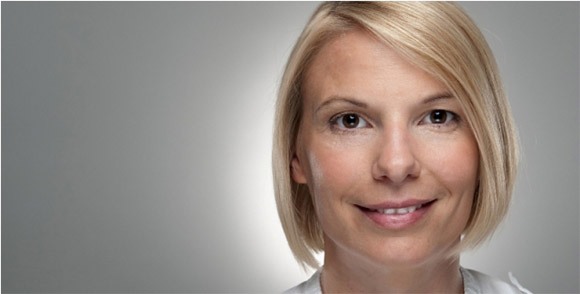Hugo Boss- a great example of linking sponsorship to the point of sale- Sonja Kreye
January 24, 2012
| Sonja Kreye | |
| With its design competition ‘Dress me for the finale’ to mark the 30th anniversary of its partnership with Formula One team Mclaren, Hugo Boss demonstrated how sponsorship can be linked effectively and measurably to the point of sale, and how brand marketing can be connected to the entire retail chain. | |
Even before the recent economic crisis, the linking of sponsorship into sales and sales channels had become one of the most pertinent topics in the sports marketing. To effectively achieve sales revenues through sponsorship, creative concepts that extend beyond logo placement and brand visibility are essential.
Hugo Boss sponsorship director Till Pohlmann proposed the 30tth anniversary of the partnership between Hugo Boss and McLaren for a sales and design campaign. Liganova designed a contest where fans and customers design race overalls that McLaren Formula One racers Lewis Hamilton and Jenson Button would wear throughout the qualifying sessions. The contest was developed into a detailed and sophisticated marketing concept.
“The whole activity wasn’t only meant to be a design push”, said Pohlmann. “We wanted to have a conception that we could use in our stores throughout the whole Formula One season and that is linked directly into the point of sale and furthermore includes all international Hugo Boss markets.”
The outcome was an integrated concept that included online and social media channels (www.hugoboss.com/mclaren; www.facebook.com/hugoboss), guerilla marketing, store events, dealer promotions, specially designed show windows and a season-concluding charity event in support of Save the Children.
The concept’s focus was the season-round global design contest ‘Dress me for the finale’ on the Hugo Boss website. Participants were able to use an online configuration tool to design a race suit that Lewis Hamilton and Jenson Button wore at the season finale. During the season, representatives from Hugo Boss and McLaren voted for a winner at every Formula One race weekend. The drivers wore the winning suit in the qualifying session of each race. The overall winning suit was voted for by fans, who chose between each weekend winner, and both drivers wore it during the final race of the season. The contest was limited to the countries around each race location.
The contest was announced via the Hugo Boss website (www.hugoboss.com/mclaren), a press release to all major fashion magazines and the Hugo Boss Facebook page (www.facebook.com/hugoboss). There was also a YouTube video that explains how it worked. In the first three races, more than 7,800 designs were submitted to the jury and the hugoboss.com/mclaren site registered more than 310,000 visits!
The contest was linked to the sales channels by a specially designed ’30 years McLaren and Hugo Boss’ collection that was sold online and in all participating Hugo Boss stores. Together with a special retail marketing package, window design and store events, some of which were attended by the drivers, Hugo Boss offered its retailers comprehensive advertising possibilities and a great story.
“Our target was to establish an integrated and international activation concept with high customer retention and involvement, and to connect it into our retail channels. After only three races, we generated 2,500 leads”, said Pohlmann.
The campaign quickly proved its popularity in retail; many dealers requested and organized store events with up to 200 guests. The Hugo Boss McLaren collection achieved a 44 percent higher sales rate into retail than any other collection. “The integration of the drivers Lewis Hamilton and Jenson Button into some of the big in-store events was obviously another highlight and catered for a high customer involvement.”
The campaign achieved further attention using some guerrilla activities involving an oversized inflatable helmet prior to every race. The helmet advertised the design contest and was frequently accompanied by sales promoters.
An event, at which all the suits designed by the fans throughout the year have been auctioned for charity, for 500 to 800 invited guests concluded the campaign. The proceeds were donated to ‘Save the children‘. This activity cleverly integrated corporate social responsibility into the concept.
According to Pohlmann, creative agency Liganova, with its expertise in fashion, automotive and lifestyle brands, was the ideal partner for the project. For many years, the agency has been known principally for the creative implementation and connection of visual marketing into the sales room, for merchandising, in-store and outdoor promotions as well as dealership architecture and brand events. However, under the management of Bodo Vincent Andrin and Michael Haiser, Liganova has developed into a valued consultant for integrated ‘through-the-line‘ brand strategies and campaign creation.
Sonja Kreye is a Sponsorship and PR Consultant and is working with customers that include tolimit Sport & Marketing, Publicis Kommunikationsagentur, Motorsport-Guide.com and Joest Racing Team with regards to sponsorship concepts, sponsorship development and activation as well as with regards to public relations and communications. In her career, Sonja consulted and managed sponsorship concepts for brands such as DHL, Krombacher, Veltins, Sigma, Procter & Gamble and many more. Prior to her current role, Sonja was Business Relations Manager at Porsche Motorsport and furthermore consulted Formula One race tracks such as Hockenheim, Shanghai and Magny Cours and she holds a Bachelor of Business Administration in Media & Marketing.
{jcomments on}



